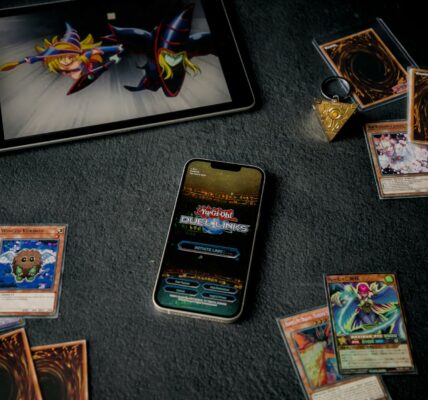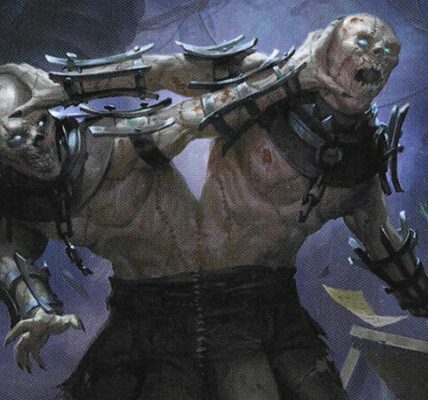Beedrill is likely one of the first Pokemon that “boomers” such as me ever evolved in Pokemon Red, Blue, or Yellow. The Bug/Poison type Pokemon certainly wasn’t one of the flashiest or best Pokemon in the game, especially with its initially limited move pool. But, as a Pokemon that evolved from a lowly Weedle and Kakuna, Beedrill was one of the best Pokemon available early in the adventure.
Its Bug-type counterpart Butterfree is certainly a fan-favorite, partly due to its popularity in the anime and also due to its status-inducing powder moves. But, overall, Beedrill has a few things going for it, even as early as Red and Blue. Here, let’s examine how good Beedrill was, or not, in its debut generation and in Gen 2’s Gold, Silver, and Crystal.
Is Beedrill Being a Bug/Poison Type Good in Gen 1?
In Generation 1, just as they are now, Bug-type moves were super-effective against Grass and Psychic type Pokemon. Also, Bug-types have a weakness against Fire, Flying, and Rock moves, just as they do in the 9th generation of Pokemon.
But, there are some key differences with the Bug type in Generation 1. For example, Bug-type moves were also super-effective against Poison-type Pokemon. Considering how many Poison types exist on trainer teams in the Generation 1 games, you might think Bug-type moves would be overpowered. But, in Generation 1, Bug types were also weak against Poison-types, likely done to balance a type which you could acquire so easily early in the game.
The Bug-type also enjoyed resistances to Fighting, Grass, and Ground type moves. This is still true today. Also, Bug-type moves were resisted by Fighting, Fire, Flying, and Ghost types, also still true in Generation 9.
The Poison type in Generation 1 is also somewhat different than it is today. Poison-type moves were super effective, dealing double damage, against Bug and Grass types. This type advantage against Bug types would not exist starting in Generation 2 with Gold and Silver. But, it’s important to keep in mind that such a type advantage exists in Generation 1 to properly evaluate Beedrill at the time.
What has not changed with the Poison-type is that Poison moves are resisted by other Poison types, as well as Ground, Rock, and Ghost types. Also, Ground and Psychic type moves were and still are strong against Poison types. Poison-type Pokemon also resist Fighting and Grass type moves.
What does all this mean for Beedrill, then? Because of how the Bug and Poison types worked in Generation 1, Beedrill has a weakness to Fire, Flying, Psychic, Bug, and Rock type moves. This means that Beedrill is actually weak against the many early Bug, Flying, and Rock types you encounter in Red, Blue, and Yellow. It’s likely that the designers felt that because you could evolve Beedrill so quickly, its improved stats would be counter-balanced by other bugs, fliers, and rocky types.
On the flip side, the Bug/Poison type does have advantages in Generation 1. After all, if you outspeed the Bug-types you face, Beedrill’s Poison moves will be super-effective. Also, Beedrill is a perfect foil against the many Grass types you’ll run into. This is likely in part why many early Grass types shared a Poison type, so that early game Bugs couldn’t just sweep through many trainer’s teams with ease.
It’s also helpful that Bug types are strong against Psychic types, but that’s instantly counter-balanced by Beedrill also having the Poison type. So, overall, Beedrill is really only good against Grass and Fighting types, while being neutral against Normal, Water, Electric, Ice, Poison (thanks to also being Bug type), Ground, Ghost, and Dragon types.
Beedrill Has a Bad Gen 1 Moveset
Now that we’ve examined Beedrill’s typing, which is already below average in Generation 1, we now look at its abysmal move pool. The best moveset for a Beedrill in Red and Blue by level-up is Fury Attack, Twineedle, Rage, and Agility. That’s right, it doesn’t get any Poison move by level up, meaning it must retain Poison Sting, a measly 15 base power from Weedle. It gets worse when you look at its minimal TM learnset, too, as while it does learn Toxic as a useful move, it doesn’t learn any other Poison-type moves.
Now, Beedrill does learn Swords Dance, which is great, because Attack is Beedrill’s best stat at base 80. It does learn some powerful Normal-type TMs including Take Down, Double-Edge, and Hyper Beam. Rage is just a bad move, which it already learns by level up, so you won’t ever want to learn that on purpose. It also learns Skull Bash, which is a two turn move, and you’re better off teaching Double-Edge over that. Beedrill also learns Swift, which is a 60 power Normal-type move that can’t miss, which is far better than Rage.
The only special attacking move that Beedrill learns is Mega Drain, which while generally a good move, Beedrill has a poor 45 Special. In Generation 1, Special worked both on offense and defense, a silly thing that was fixed starting with Gold and Silver. Beedrill also learns the TMs that many Gen 1 Pokemon do: Mimic, Double Team, Reflect, Bide, Rest, and Substitute.
Beedrill can learn the HM for Cut, which is only a 50 power Normal-type move with 95 percent accuracy. As your HM Friend for Cut, it’s not terrible, but it’s a bit of a waste on Beedrill, who can learn far better attacking moves. Notably, despite having wings Beedrill cannot learn the HM for Fly, although it makes sense since it’s not even a Flying type anyway.
So, Beedrill really can’t take advantage of its typing at all, with the 25 power Twineedle its best same-type move. Since it always hits twice, and it gets a Same-Type Attack Bonus of 50 percent, each hit is effectively 37 base power for an effective total power of 74. That’s actually not horrible, and if it’s super-effective, then it’s a 148 effective base power move. So, Twineedle isn’t a horrible move and it’s worth keeping, especially with a 20 percent chance to Poison anything that’s not also a Poison-type. This would be Beedrill’s signature move until Black and White, in fact.
Considering what Beedrill can learn by TM, a best moveset in Gen 1 would probably look like this:
- Swords Dance
- Twineedle
- Hyper Beam
- Mimic
That last move slot really depends on what you’re trying to do. Mimic is probably the best option, though, as stealing any physical attacking move (anything that’s not elemental such as Grass, Fire, Water, etc.) is actually a good move for Beedrill.
There are some other options. Substitute is good for setting up Swords Dance against opponents that wouldn’t do much damage to you anyway. Rest is just a useful move in Gen 1, especially if you’re doing a solo run with a Pokemon. Reflect isn’t as good in Gen 1 because it only boosts the Defense of that Pokemon; it isn’t a screen that is shared by the rest of your team in Gen 1. So, I’d probably just go with Mimic here.
How Does Beedrill Compare to Other Gen 1 Pokemon?
Overall, Beedrill has a below average typing, with five weaknesses and only two resistances, with a move pool that is extremely underwhelming. Fortunately, Double-Edge and Hyper Beam can take advantage of Beedrill’s strong Attack stat. Beedrill also has 75 base Speed, which is a perfectly fine number. But, Beedrill’s other stats aren’t great: 65 HP, 40 Defense, and 45 Special. That means it folds to most elemental attacks (which are Special until Generation 4) and its going to need to move first to be effective. You could run Agility to outspeed some threats, but you don’t really want to set up with Beedrill more than one turn, and you’re better off boosting Attack.
In Generation 1, Beedrill has a base stat total of 305, for an average of 61. This puts it on the level of Kabuto and Omanyte, Nidorina and Nidorino, along with its Bug counterpart Butterfree. Considering that Butterfree also has the benefit of being a Flying-type, Nidorina and Nidorino have far better move pools and typing, and the other two are fossil Pokemon with strong evolutions, Beedrill is probably the worst of this tier of Pokemon.
All this being said, though, Beedrill has a Medium Fast growth rate, meaning it maxes out at 1,000,000 experience points. So, it’s a good team member if you are willing to take it over Butterfree or not use a Moon Stone to get Nidoqueen or Nidoking.
Does Beedrill Improve in Gen 2?
Fortunately, Beedrill improves in Generation 2 with the release of Gold and Silver. First off, Game Freak decided to split Special into Special Attack and Special Defense. This is a major plus for Beedrill, who will have a special split of 80 Special Defense and 45 Special Attack. That Special Defense stat is a major improvement over its abysmal 45 Special stat, gaining Beedrill much better survivability against Special attacks.
While Beedrill doesn’t gain a new Bug type move in Gold and Silver, it does gain the Dark-type move Pursuit by level up. While it’s only a 40 base power move, it does super effective damage to Psychic types. More importantly, by TM, Beedrill gains a much needed Poison-type move in Sludge Bomb. While this move after Generation 4 will be a Special based attack, through Generation 3 all Poison-type moves were considered Physical attacks. With the same-type attack bonus, this gives Beedrill an effective 135 base power move, finally taking advantage of its offensive typing.
Like all other Pokemon in Gen 2, Beedrill also can take full advantage of the overpowered Normal-type move Return (powered up by the Friendship mechanic) and Hidden Power, which can be any type based on the Pokemon’s DV’s (the Gen 1 and 2 equivalent of IVs or Individual Values which exist today). This could even be Hidden Power Bug, which would be a 50 power move, but effectively 75 base power thanks to the same-type Attack Bonus, giving it a better option over Twineedle. However, many players opted for Hidden Power Ice when available, as its 70 base power and being able to hit Dragon and Flying types for super effective damage.
Thanks to the Special split of Generation 2, Beedrill’s base stat total rose to 385, again matching Butterfree, whose Special split favored Special Attack instead. However, the new stat total average of 64.17 put Beedrill on par with Poliwhirl, Onix, and Lickitung. This is a slight improvement in the Bee’s overall standing. Plus, thanks to learning Sludge Bomb, Beedrill could now deal massive neutral damage, making it a far more useful team member for the entire game.
The best Gen 2 Beedrill moveset would look like this:
- Swords Dance
- Twineedle / Return
- Sludge Bomb
- Hidden Power (Ice, Ground, or Rock)
While Beedrill’s 80 Attack stat was finally being realized in battle, at this point, 75 base Speed was no longer as good. This is despite the fact that Generation 2 introduced a lot of slower Pokemon, which actually made Beedrill’s average speed actually become above-average overall. But, Pokemon that could punish Beedrill, which were Fire, Flying, and Rock types, continued to often be faster.
However, Beedrill did gain some boons to its typing. Bug-type moves were now super effective against the brand-new Dark type. While Bug-type moves were now resisted by Poison and the new Steel type, Bug type was no longer weak to Poison. This means that Beedrill gained the Bug and Poison resistances and lost its weakness to Bug. This balances its resistances with its weaknesses with four each. So, Bug/Poison was now a much more average type.
Beedrill was still a below-average Pokemon, however, especially with the 100 new additions and several other Gen 1 Pokemon gaining advantages from the Special split and new moves. However, Beedrill was on the way up the food chain, even if its overall position had moved up only slightly. The great news is that Beedrill wasn’t done getting better, but it wouldn’t gain much in Generation 3. The best was still yet to come for our buzzing friend.
Be sure to check out our other articles about Beedrill: We examine Beedrill in Generation 3 and 4, when another big change came to the game in the Physical/Special split of attacks. Later, we cover Beedrill gaining a Mega Evolution.
What do you think of Beedrill? Have you ever used Beedrill on your Pokemon team?
Updated February 11, 2023
Pokémon and All Respective Names are Trademark & © of Nintendo 1996-2023









